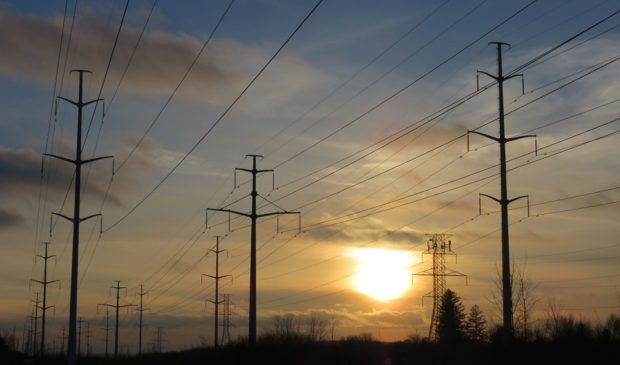Austin Energy defends its rate proposals to Council
Tuesday, August 9, 2016 by
Jack Craver City Council members didn’t have a whole lot to say on Monday during their first hearing regarding the electricity rates that Austin Energy, the city-owned electric utility, has proposed for the next five years.
Convened as the Austin Energy Utility Oversight Committee (a committee of the full Council), they sat, for the most part, silent and expressionless as they listened to testimony from both Austin Energy officials and the impartial hearing examiner hired by the city to oversee the rate review, which began in January. Since then, two dozen parties, including individuals, advocacy groups and businesses, have signed up as “intervenors” to advocate for a variety of changes to electricity rates.
The few comments that Council members did make reflected hesitation to embrace some of the utility’s proposals, which have been criticized as regressive by advocates for the environment and low-income consumers.
Mayor Pro Tem Kathie Tovo said she was troubled by the utility’s proposal to “flatten” residential rates by raising the amount it charges to those who use the least amount of electricity and decreasing that charged to the heaviest users.
“It concerns me that the increase in the residential rates is being borne by those who are using the least amount of energy,” she said, in apparent concurrence with objections raised by groups such as Public Citizen and Sierra Club, which have said that the utility’s proposal represents a step backward in the city’s efforts to encourage energy conservation and to offer low-income customers a way to keep their bills low.
Mark Dreyfus, AE’s vice president of regulatory affairs and corporate communications, responded that the utility has to strike a balance between rewarding conservation and generating revenue in order to cover the cost of delivering service. Those who are using the least amount of electricity are not covering their cost of service, he said.
Furthermore, residential customers don’t typically stay in one usage class throughout the entire year, Dreyfus pointed out.
According to a study the utility conducted on customers enrolled in Austin Energy’s Customer Assistance Program (which is intended to serve low-income customers), 83 percent are in the lowest two tiers of usage in April, when temperatures are mild and most customers aren’t using much heat or air conditioning. In August, however, less than 30 percent of such customers are in the lowest two tiers.
There also does not appear to be a major difference in energy use patterns between the poor and the rich, said Dreyfus.
The greatest disagreement between the utility and the groups representing residential customers continues to be the utility’s proposal that only commercial or industrial customers receive a rate reduction.
Judge Alfred Herrera, the impartial hearing examiner, told Council that Austin Energy could reduce rates by between $60 million and $75 million – far more than the utility has offered. The amount is more in line with what was proposed last month by a group of intervening parties made up of a diverse group of stakeholders, including an independent consumer advocate and Samsung. However, those stakeholders may not all benefit equally from such a reduction if it is implemented. In fact, Herrera sided with the utility in arguing that the rate reductions should be directed exclusively toward the commercial classes.
In justifying the rate reductions it is proposing for businesses, the utility points to its cost-of-service study, which found that while residents are paying 17.5 percent less than what it costs to provide them with electricity, businesses pay far more than their fair share, ranging from 7.9 percent more among the largest industrial customers, to 27.2 percent more among midsized commercial customers.
According to the utility’s analysis, under the proposed new rates, businesses would still be paying more than their cost of service, but not by quite as much. Residential customers, meanwhile, would remain 17.5 percent below cost of service.
“It eliminates cost-of-service misalignment but does not eliminate subsidies entirely,” said Dreyfus in remarks to Council members.
In an interview with the Austin Monitor, John Coffman – the independent consumer advocate hired by the city to represent residential customers and small businesses – said that he hoped people understood that the utility’s claims about who is paying their fair share is “not science.” The utility measured cost of service through the “12 coincident peak” method, which focuses on peak usage for each class of customers for each month of the year. By contrast, the independent consumer advocate used the “base intermediate peak” method, which takes into account a greater number of variables.
Council members did not raise any objections to either the utility’s cost-of-service study or the way in which AE proposed distributing the rate reductions across the different customer classes.
Council Member Greg Casar did wonder if, rather than debate whether to continue the current discount afforded to houses of worship, the city could create a separate class of commercial customers that, like churches and synagogues, tend to use much more energy during the weekend.
Council will convene four more times to address the rate review before making a final decision on Aug. 29.
Photo by NatashaG made available through a Creative Commons license.
The Austin Monitor’s work is made possible by donations from the community. Though our reporting covers donors from time to time, we are careful to keep business and editorial efforts separate while maintaining transparency. A complete list of donors is available here, and our code of ethics is explained here.
You're a community leader
And we’re honored you look to us for serious, in-depth news. You know a strong community needs local and dedicated watchdog reporting. We’re here for you and that won’t change. Now will you take the powerful next step and support our nonprofit news organization?








